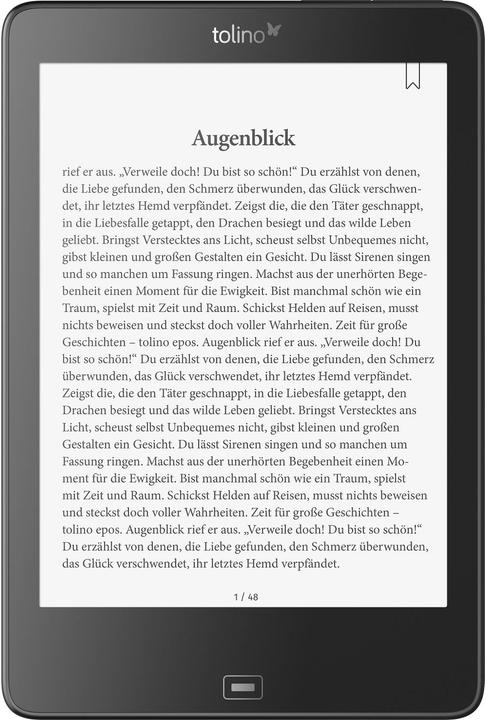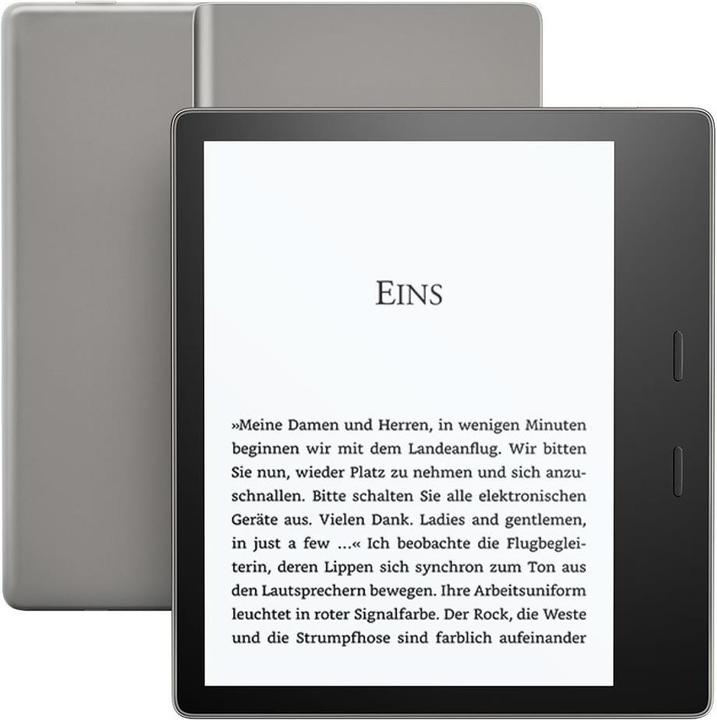

eReader: What you need to know about DRM
With eReaders, it's not so much about the technical specs. Much more important is which books you can read on them. Due to different copy protection systems, not everything works everywhere.
If you are faced with the choice of whether to buy an Amazon Kindle or another eReader, you need to be aware of one thing: this decision is not primarily about the device and its technical specifications, but about which shop system you use. This is because purchased books are very often copy-protected (also known as "Digital Rights Management", or DRM for short). Amazon, Apple and the other online booksellers use three different DRM systems. And of course they want you to buy not only the device but also the books from them. Therefore, not every book can be read on every reader.
The above three readers are quite different in terms of price and functions. However, they belong to the same DRM system, namely that of Adobe. They can be used to read DRM-protected books from Swiss bookshops, Swiss libraries and the Google Play Store.
These three readers also differ in their technical specifications, but are all from Amazon and are therefore subject to specific copy protection restrictions.
The file format says little about compatibility
There are three common file formats for eBooks. AZW is Amazon's proprietary format. All others use EPUB and PDF. EPUB is better for books that consist mainly of text, for example novels. PDF is better wherever graphic design is important (e.g. books with lots of pictures, tables, graphics or special fonts). Unlike EPUB, PDF has a rigid page layout, which can be cumbersome on small screens.
The file format says little about which devices the book can be read on. There are EPUB and PDF without DRM, with soft DRM and with hard DRM. The only thing that is clear about the .epub file extension is that it cannot be read on an Amazon Kindle, unless you go to the trouble of the hack described here:
DRM-free books
Books without DRM are either deliberately free (similar to a text on the web) or they are old classics for which the copyright has expired or never existed in the first place. In Switzerland, copyright expires 70 years after the author's death. This is why you can, for example, download the legendary Wachtmeister-Studer crime novels by Friedrich Glauser (1896-1938) for free or for a symbolic amount. As these books have no DRM, it doesn't matter where you get them (with the restriction that Amazon Kindle does not accept EPUB).
The "soft copy protection"
Both EPUB and PDF can be technically protected with so-called soft copy protection (soft DRM). You will not notice this copy protection when you use the book: You can easily copy such a book to a second device, you could also email it to a friend and they can open the book. This is not possible with hard copy protection; access is blocked if it is not linked to the authorised account.
Soft copy protection consists of a digital watermark. This is usually invisible information such as the customer number or order number. This means that a book can be traced back to its purchaser in the event of unauthorised redistribution (for example on a file-sharing platform).
Soft copy protection is therefore much more user-friendly. The good news is that soft copy protection seems to be gaining ground. Of the "Bestsellers Switzerland" on Orell Füssli on 17.10.17, all books in the top 10 were only provided with soft copy protection.
The hard copy protection
As mentioned, there are three competing systems for hard copy protection, and this is a real hassle because hard copy protection simply prevents reading. In theory, the rights administrator can also withdraw your right of use at any time. This is because, unlike with the physical purchase of a book, with an eBook you only acquire a right of use - just like with software. Amazon has already done this in the past.
The Adobe system is considered open because it is not tied to a specific group. All Swiss online booksellers and libraries as well as Google Play use Adobe Digital Editions. The books can be opened not only on practically all eReaders (except the Amazon Kindle), but also on iOS and Android devices. This requires an app like Bluefire Reader. It also works with Google Books. However, you will be forced to upload books stored locally on your device to the cloud and then download them again. That's just the way it is with Google. Registration with Adobe is required to use Adobe DRM. And because the book is copy-protected, you can't copy out large passages of text either.
Apple gives the books their own copy protection. This means that you can only read books in Apple's iBooks Store. This also works across devices - but only as long as they are Apple devices.
Amazon is even more radical than Apple. Anything that does not come from its own shop will not run on the Amazon Kindle. But the reverse is true: with the help of the Kindle apps, you can also read Amazon books on an iPad, an Android smartphone or even a notebook.
Hard copy protection may be on the decline, but it has by no means disappeared. Books from Diogenes-Verlag, for example, still have it, and Amazon and Apple only offer the "hard" method - or (more rarely) copy protection-free.
The overview: what's on where

My interest in IT and writing landed me in tech journalism early on (2000). I want to know how we can use technology without being used. Outside of the office, I’m a keen musician who makes up for lacking talent with excessive enthusiasm.





